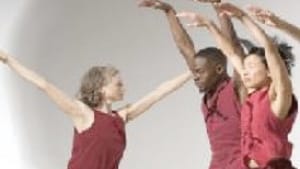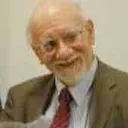Stay in the Loop
BSR publishes on a weekly schedule, with an email newsletter every Wednesday and Thursday morning. There’s no paywall, and subscribing is always free.
Making sense of war: Musicians invade the Armory
"Battle Hymns' at Hidden City Philadelphia (1st review)

George Orwell expressed a similar thought, more concretely, in an essay on his experiences as a front line soldier during the Spanish Civil War. He was fighting a war that was about something, Orwell wrote, and yet he endured the same sordid realities as the soldiers who had lived with the mud, filth and boredom of World War I's trenches. He was caught, in Stein's terms, in the tension between the "military mission" — the objectives of the war, which Orwell believed in — and personal experiences that remain pretty much the same, war after war.
Battle Hymns is one of the best artistic responses to war I've ever encountered. It would be natural to compare it to musical works like Benjamin Britten's War Requiem. But I'm more inclined to compare it to the work of writers like Hemingway, Orwell, and James Jones.
War's conflicting emotions
Writers should write about what they really feel, Ernest Hemingway said, not what they think they should feel. Battle Hymns is the kind of thing artists produce when they follow Hemingway's dictum. The composer (David Lang) and the choreographer (Stein) didn't try to create something that merely made a statement pro or con war. Instead, they confronted their real feelings and based their work on all the conflicting emotions war arouses.
Lang centered half of Battle Hymns on a famous "If I die" letter written by the Civil War officer Sullivan Ballou to his wife — a letter that was, in fact, delivered to Sarah Ballou after he was killed. Lang didn't set the text as written, however. Instead, he broke it into phrases and arranged them alphabetically, so all the things a soldier can say about war come at you at random, in a 20-minute catalogue crowded with sequences that hop across the whole emotional landscape:
and my blue eyed Edgar
and my children
and my courage does not halt or falter
and never know
and often
and of the principles
and proudly in the breeze
and replace them
and seen our sons grow up
Lang is a minimalist composer, but in this case the technique is as effective as a good writer's use of understatement. He works with musical fragments, not melodies, but he uses his materials with imagination. He passes the fragments among the different sections of the chorus and creates meaningful, musically interesting contrasts by setting the different sections against each other. His instrumental force is limited to three musicians playing keyboard and percussion but it embellishes everything with rhythm and color.
Lincoln paired with Stephen Foster
For his other texts, Lang chose a short statement by Abraham Lincoln and three songs from the Civil War era by Stephen Foster. The Foster songs are given the same unsentimental musical treatment as the Ballou letters. The Lincoln quote is "As I would not be a slave/I would not be a master." Lang's setting starts slowly and reaches an exuberant climax for chorus, dancers and snare drum solo — a reminder that there was, after all, a reason why the members of Philadelphia's First City Troop fought in the Gettysburg campaign.
Leah Stein's choreography employs not only her dance troupe but also the chorus and the setting. She captures the tension between the military mission and personal experience by treating the chorus as officers and the dancers as common soldiers (though she also notes that we shouldn't take this too literally, since they can be the same people). The chorus was costumed in neat gray outfits, with gray World War II overseas caps, the dancers in grungy suggestions of combat garb.
Like soldiers, like dancers
For the long opening sequence, the chorus entered through the big doors at the east end of the armory, arranged in a neat formation, and advanced down the huge space, inexorably, step by slow step, as they sang. During the Stephen Foster song, I'll be a soldier, a dancer engaged in risky acrobatics on a metal stair railing and three other dancers clawed at a wall as if they were climbing it like commandos. The song ended with the dancers piling into a small truck and crowding onto a side bench — a familiar experience for anyone who served in the U.S. Army during much of the 20th century.
For the Foster song, Tell me, tell me weary soldier was my brother in the battle?, Lang sets the body of the text against a haunting repetition of Tell me. Stein's choreography includes bandages, crutches and dance movements that suggest violence, dominance, fear, and mutilation.
A lone female rider
In his program comments, Lang proposes that Stephen Foster wrote the final song in the group, Beautiful Dreamer, as a "secret attempt" to escape the Civil War. Battle Hymns ends with a soft quietus as chorus and dancers mingle on the armory floor.
The final touch is the reappearance of a lone rider who opened the event by making a small circle at the end of the armory. The rider is a woman dressed in white civilian riding clothes, but that seemed just as appropriate as a military horseman would have been. As most Philadelphians know, the First City Troop is an intriguing combination of social club and functioning National Guard armored cavalry unit. The troopers who ride through our streets in ceremonial uniforms ride horses for sport in civilian life, but they also belong to a military organization that has fought real battles.
A dead theater, resurrected
Battle Hymns is an event in the Hidden City Arts Festival, a series of site-specific works that take place in offbeat city venues. On Wednesday, June 10, I attended a Network for New Music program in the remains of the historic Royale Theater on South Street. That was a memorable event, too, with the audience wearing hard hats and watching ghostly images projected on the front wall while we listened to two new works composed for the occasion.
The Network program celebrated a dead building that may yet be resurrected. Battle Hymns works with the home base of an active organization that has been engaged with profoundly emotional events since the founding of our republic.
To read another review by Jonathan M. Stein, click here.
What, When, Where
Battle Hymns. David Lang, composer; Leah Stein choreographer; Heidi Barr, costumer. Mendelssohn Club of Philadelphia, Leah Stein Dance Company. Toshi Makihara, percussion; Don St. Pierre, keyboard; Daniel Schwartz, drum; Alan Harler, conductor. June 13 and 20, 2009, at Armory of the First Troop Philadelphia City Cavalry, 22 South 23rd St. (267) 597-3808 or www.hiddencityphila.org.
Sign up for our newsletter
All of the week's new articles, all in one place. Sign up for the free weekly BSR newsletters, and don't miss a conversation.

 Tom Purdom
Tom Purdom